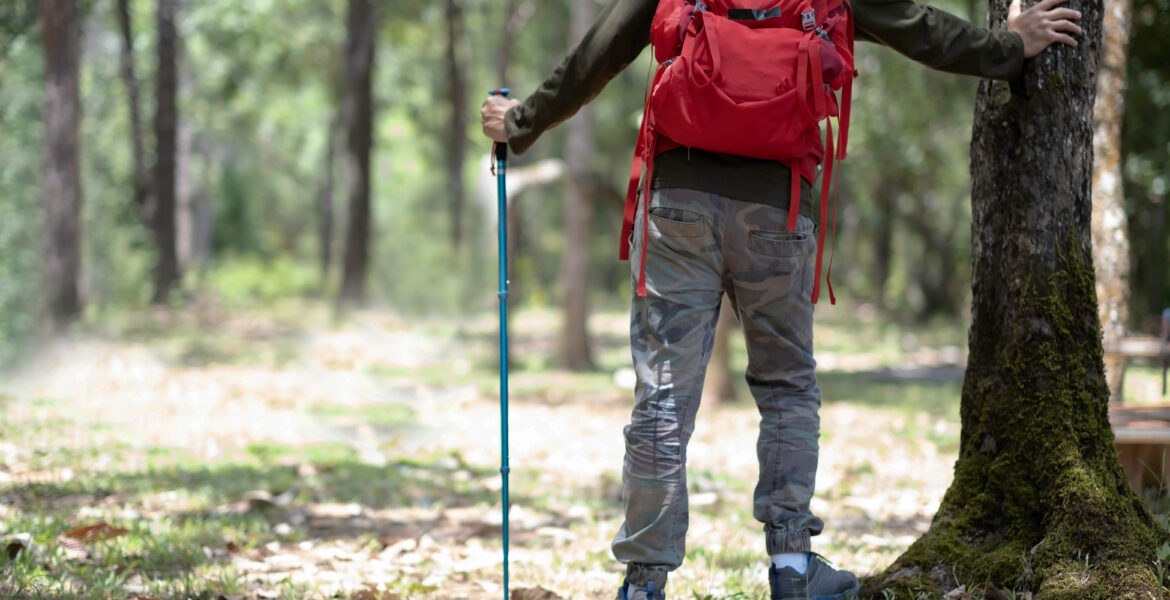Hiking up mountains, through adventurous pathways, and into a beautiful nature landscape is not everyone’s forte. It’s hard work, puts pressure on the joints, and overworks the muscles. To say you’ll be sore the next day is an understatement.
But, for those of us that love the outdoors – and for those of us that love cross-country walking – it’s a passion.
If you’re hopping aboard the bandwagon and just getting started with the sport, we want to assure you that you’re not alone. We were once there.
To better prepare you, we’ve come up with a quick list of necessities to pack and keep on you. Some are just in case additions, others are pure necessities. Either way, don’t forget any of them when you’re on your hiking travels.
Appropriate Clothing
This will differ according to the weather, so check the forecast before you hit the trails. Consider things like protection, comfort, and inclement weather when making your selections
The best starting points are: Moisture-wicking underwear and shirt, quick-drying pants or shorts, and synthetic or wool socks.
If it’s super duper hot out or there’s a plethora of bugs in the air, be sure to pack a long-sleeve shirt. If the winds are picking up and the weather is transitioning to breezy, be sure to pack a lightweight fleece or jacket.
Additional items to consider include:
- Rainwear
- Insulated jacket or vest
- Fleece pants
- Gloves
- Warm hat
- Gaiters
- Bandana
First Aid Kit
Unexpected injuries can arise at any moment; it’s best to be prepared before a mishap occurs. One first aid kit per person is the best rule of thumb – and if your pup is coming along, one for them, too.
You’ll want to include things like bandages, antiseptic wipes, antibiotic ointment, medical tape, gloves, blister treatment, and common medications like ibuprofen and Benadryl.
Sun Protection
Most people might think that this suggestion is a “duh,” but you’d be surprised how many minds it slips when packing.
The priority here is protecting your skin from the sun the right way. That means tagging sweat-proof sunscreen along for the right (one that’s at least SPF 30). While you’re at it, a breathable brimmed hat and sunglasses are a great idea, too.
Navigation Tools
Phones and a savvy GPS tracker are great to have handy, but what if you lose service and can’t find your way out of the deep woods? That’s why we threw this necessity in the mix; be sure to pack a paper map AND compass. You can never have enough backup, especially when you’re lost.
Pro Tip: Also make sure you know how to use a paper map/compass, because what’s the point of having them if you don’t know how to navigate with them?
Emergency Shelter
If you need to set up shop in an emergency – whether it be to stay safe from a storm or be protected overnight – you gotta have shelter. So make sure you have some sort of small tent, tarp, or bivy sack (and for extra safety, an emergency space blanket).
These options are all pretty lightweight, putting little to no extra pressure on you while hiking.
H2O
Whatever you do, do not forget water. If it’s hot out and you’re working yourself to the bone, H2O could quite literally save the day.
As a rule of thumb, you’ll need at least a half liter of water for every hour you’re out there. It’s best carried in a hydration reservoir or a reusable water bottle. Nothing plastic, as the particles can melt into the liquid at high temps. Just try to avoid dense options, as this will just add more weight for your body to carry.
Some Sort of Night Light
Night light? Like the ones you plug in to guide you down the house hallway when you have to use the bathroom at 2 a.m.?
No, not those. We mean something that will help you see once the sun goes down, like a flashlight or headlamp. It’ll be a crucial necessity to find your way back through the trail and get to safety. But make sure the batteries inside are charged. Or, better yet, bring an extra set.
Repair Kit & Tools
You’re not going to be fixing a sideboard in the middle of the woods, but you may need to light a fire to signal for help if you’re in an emergency. So keep a lighter and some matches in your backpack.
While you’re at it, pack a knife or multi-tool. You might need to repair some gear or open a tough first aid kit along the way.
Additional items to have include duct tape and scissors.
Food
Hikes use up a lot of energy, and when you burn through your energy fuel, you need more. That’s where nutritious food comes in. You need to at least have a full day’s supply of food on-hand for long adventures.
Choose no-cook items, as they’re easiest to eat outdoors. Think good nutrition, high energy. Some of our favs include trail mix, granola bars, and protein snacks.






